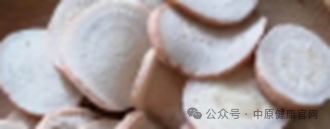Bai Shao (白芍), also known as Jin Shao (金芍), is the root of the perennial herbaceous plant Paeonia lactiflora, belonging to the Ranunculaceae family, and is a commonly used Chinese medicinal herb. In the market, there are instances where the dried roots of a related plant, Paeonia veitchii, are sold as Bai Shao, so care should be taken to distinguish between them. How can one select high-quality Bai Shao? It is essential to observe several aspects such as appearance, color, texture, taste, skin, root hairs, and cross-section rays. Let’s explore this in detail below.
1. Authenticity Identification
Authentic Bai Shao: The dried root appears cylindrical, with uniform thickness and straightness, measuring 10 to 20 cm in length and 1 to 2.5 cm in diameter. The surface is relatively flat, or may have distinct longitudinal wrinkles and root hair marks, with a light reddish-brown or pale pink color. Areas where the cork layer has not been completely removed may show brownish spots, and transverse skin pores may occasionally be seen; the texture is firm and heavy, not easily broken, with a cross-section that is grayish-white or slightly brown, and the wood rays appear in a chrysanthemum heart shape. It has no smell, and the taste is slightly bitter and sour.
Counterfeit Paeonia veitchii: The dried root often appears elongated, thicker at one end and thinner at the other, with uneven ends. The outer skin is brown, with varying shades; although it is hard and heavy, making it difficult to break, the cross-section lacks the chrysanthemum heart characteristic, and the cross-section is powdery. It has a faint odor, and the taste is slightly bitter but sweet.

How to Select High-Quality Bai Shao
1. Appearance: When selecting Bai Shao, the first thing to look at is the shape of the root. The dried roots of Bai Shao are mostly cylindrical, and the roots are long and thick, growing relatively uniformly and straight. A length of more than 6 cm and a diameter between 1.3 and 2.2 cm indicate the best quality Bai Shao.
2. Color: Generally, the surface of Bai Shao is pink or light reddish-brown, and the cross-section is grayish-white or slightly brown.
3. Texture: The root of Bai Shao is relatively firm and heavy, making it not easily breakable.
4. Smell: High-quality Bai Shao has no odor, and when tasted, it has a slightly bitter and sour flavor.
5. Skin: If the cork layer has not been completely removed, brownish spots may appear, and transverse skin pores may sometimes be seen.
6. Root Hairs: Good Bai Shao will have distinct longitudinal wrinkles and root hair marks, but not excessively.
7. Cross-Section Rays: High-quality Bai Shao generally has cross-section rays that appear in a chrysanthemum heart shape. If there are no distinct cross-section rays, it is considered inferior quality.
2. Quality Assessment
When purchasing Bai Shao, how can one determine if it has been sulfur-fumigated?
1. Smell: Sulfur-fumigated Bai Shao has a pungent, sour, and irritating odor.
2. Appearance: The surface of sulfur-fumigated Bai Shao is smoother and whiter; authentic Bai Shao slices are white or light reddish-brown on the surface.
3. Taste: Tasting or soaking in water can reveal if the flavor is overly sour.
4. Feel: After sulfur fumigation, the moisture content of Bai Shao increases, making it feel heavier and softer when squeezed.
